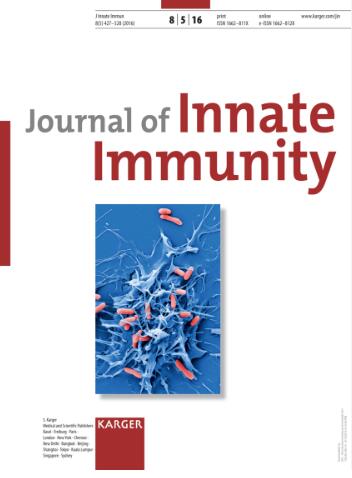在没有肺炎溶素的情况下,过氧化氢是肺炎链球菌对初级小胶质细胞产生细胞毒性作用的原因。
IF 4.7
3区 医学
Q2 IMMUNOLOGY
引用次数: 0
摘要
引言 肺炎链球菌是导致人类细菌性脑膜炎和脑膜脑炎的最常见病因。肺炎链球菌会产生许多毒力决定因子,其中包括过氧化氢(H2O2)和肺炎溶菌酶(Ply),它们有助于增强细菌的细胞毒性。方法将小胶质细胞和骨髓源性巨噬细胞(BMDM)与肺炎双球菌 D39 共同培养,通过荧光显微镜分析吞噬细胞的存活情况,通过定量培养分析细菌的生长情况,通过抗生素保护试验分析吞噬能力。结果我们发现,小胶质细胞在肺炎球菌感染野生型和同源的 Ply 缺失突变体时被杀死,而 BMDM 的存活率不受肺炎球菌的影响。重组 Ply 对小胶质细胞和 BMDM 有剂量依赖性的细胞毒性作用。然而,重组 Ply 需要高浓度,而且在选定的实验条件下,感染小胶质细胞时上清液中检测不到 Ply。外源添加的过氧化氢酶使 H2O2 失活,从而消除了其细胞毒性作用。因此,用缺乏丙酮酸氧化酶 SpxB 的肺炎球菌感染小胶质细胞,主要产生 H2O2,从而减少了对小胶质细胞的杀伤力。本文章由计算机程序翻译,如有差异,请以英文原文为准。
Hydrogen peroxide is responsible for the cytotoxic effects of Streptococcus pneumoniae on primary microglia in the absence of pneumolysin.
INTRODUCTION
Streptococcus pneumoniae is the most common cause of bacterial meningitis and meningoencephalitis in humans. The bacterium produces numerous virulence determinants, among them hydrogen peroxide (H2O2) and pneumolysin (Ply), which contribute to bacterial cytotoxicity. Microglia, the resident phagocytes in the brain, are distinct from other macrophages, and we thus compared their susceptibility to pneumococcal toxicity and their ability to phagocytose pneumococci with those of bone marrow-derived macrophages (BMDM).
METHODS
Microglia and BMDM were co-incubated with S. pneumoniae D39 to analyze survival of phagocytes by fluorescence microscopy, bacterial growth by quantitative plating, and phagocytosis by an antibiotic protection assay. Ply was detected by hemolysis assay and Western blot analysis.
RESULTS
We found that microglia were killed during pneumococcal infection with a wild-type and an isogenic ply-deficient mutant, whereas viability of BMDM was not affected by pneumococci. Treatment with recombinant Ply showed a dose-dependent cytotoxic effect on microglia and BMDM. However, high concentrations of recombinant Ply were required and under the chosen experimental conditions, Ply was not detectable in the supernatant during infection of microglia. Inactivation of H2O2 by exogenously added catalase abolished its cytotoxic effect. Consequently, infection of microglia with pneumococci deficient for the pyruvate oxidase SpxB, primarily producing H2O2, resulted in reduced killing of microglia.
CONCLUSION
Taken together, in the absence of Ply, H2O2 caused cell death in primary phagocytes in concentrations produced by pneumococci.
求助全文
通过发布文献求助,成功后即可免费获取论文全文。
去求助
来源期刊

Journal of Innate Immunity
医学-免疫学
CiteScore
10.50
自引率
1.90%
发文量
35
审稿时长
7.5 months
期刊介绍:
The ''Journal of Innate Immunity'' is a bimonthly journal covering all aspects within the area of innate immunity, including evolution of the immune system, molecular biology of cells involved in innate immunity, pattern recognition and signals of ‘danger’, microbial corruption, host response and inflammation, mucosal immunity, complement and coagulation, sepsis and septic shock, molecular genomics, and development of immunotherapies. The journal publishes original research articles, short communications, reviews, commentaries and letters to the editors. In addition to regular papers, some issues feature a special section with a thematic focus.
 求助内容:
求助内容: 应助结果提醒方式:
应助结果提醒方式:


